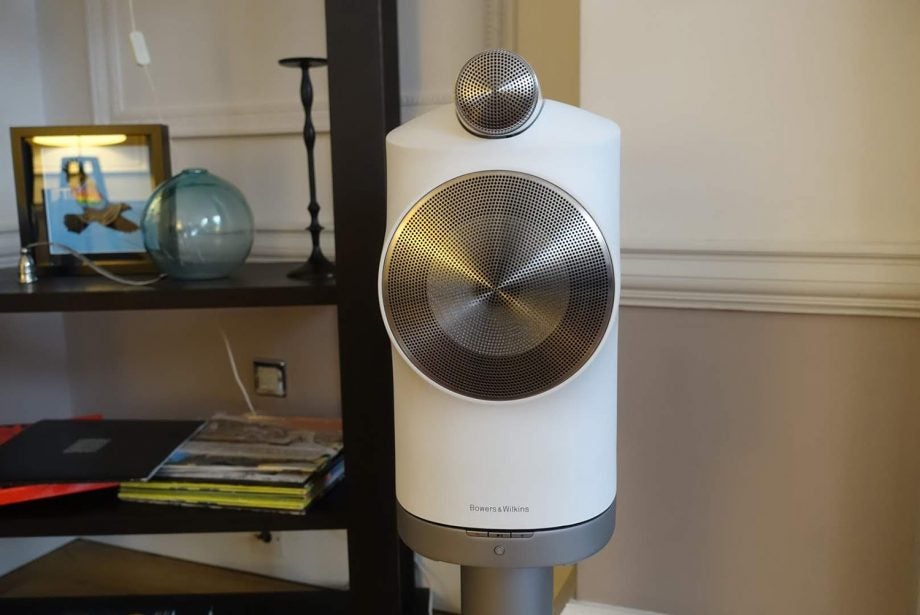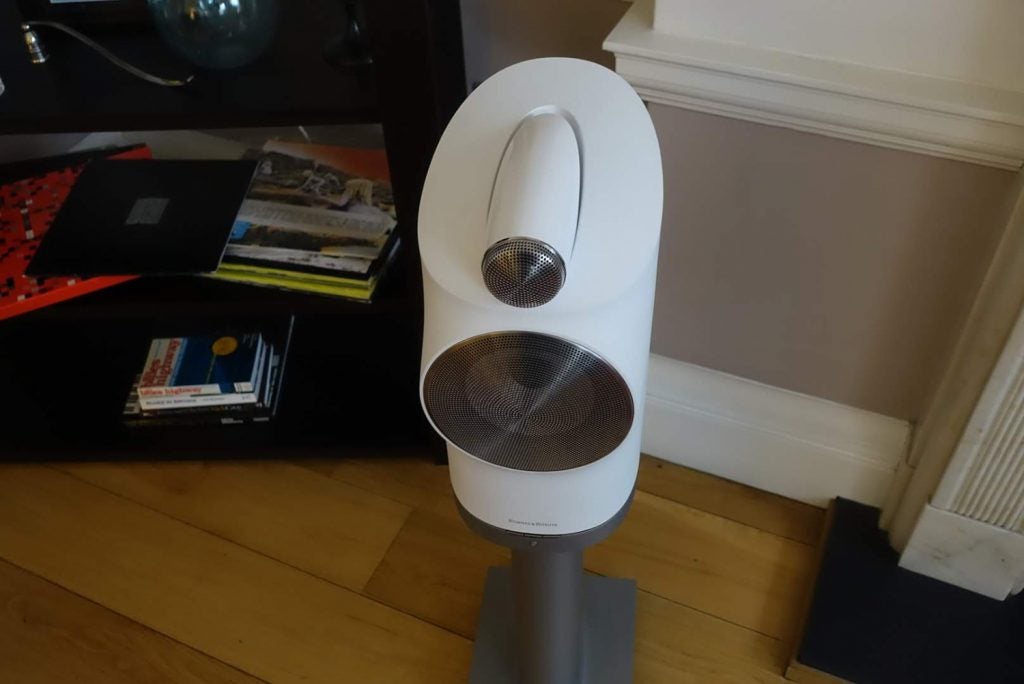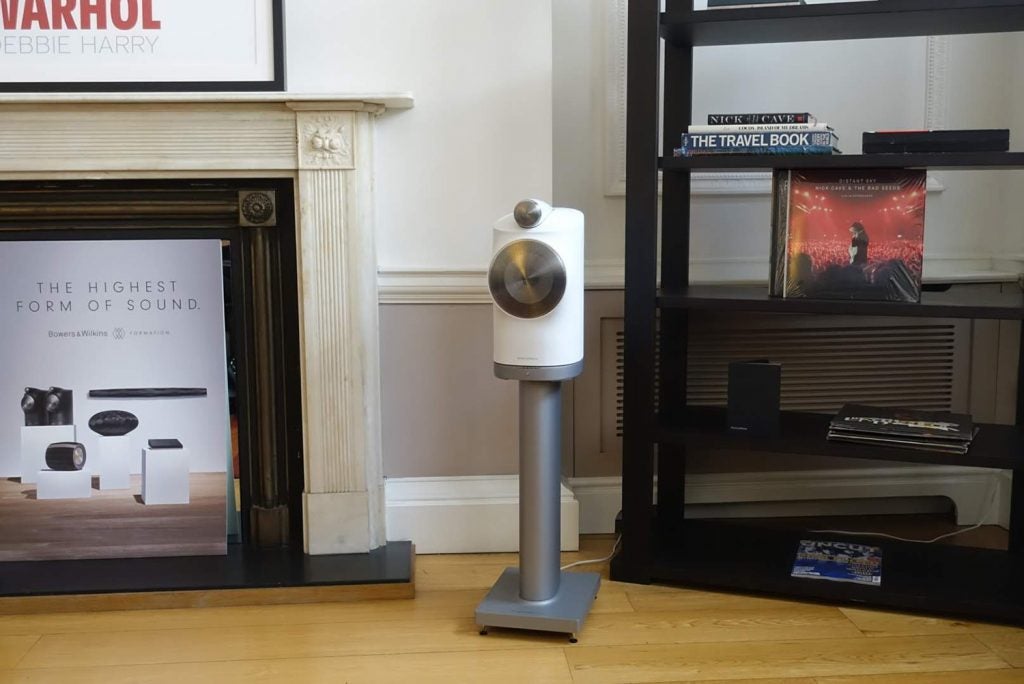First Impressions: B&W Formation Duo Review
First Impressions: B&W Formation Duo
High-performance sound in a convenient package

First Impressions
Key Specifications
- Review Price: £3499
- 10.6kg
- Apple AirPlay 2, Spotify Connect
- Bluetooth v4.1
- Formation Wireless mesh system
- Supports up to 96/24-bit high-resolution
- H40 x W19 x D30cm
- Roon Ready
Bowers & Wilkins Formation suite is the hi-fi manufacturer’s latest bet in the high-end audio market. The aim is to expand and diversify its portfolio of products, bringing them more in line with modern expectations of what a wireless system is.
The Formation range is a family of products that can work together or on their own, with the emphasis on plug-and-play performance that delivers the quality we’d expect from a traditional hi-fi package but without scrimping on audiophile-quality sound.
Trusted Reviews was invited to a hands-on session to see what all the fuss was about. First up for scrutiny was the Formation Duo, B&W’s flagship – and the most expensive – product in the Formation range.
B&W Formation Duo − Design
The Duo takes its design cues from B&W’s 700 and 800-series speakers. You have the unique carbon-dome tweeter and instantly recognisable Continuum cone mid-bass driver configuration, with the decoupled tweeter sitting on top of the unit and the mid-bass driver bulging out (that’s more noticeable when seen from the side).
Related: Best Bluetooth speakers

Inside, the Duo makes use of B&W’s honeycomb-style Matrix bracing, which removes traces of resonance and reflections. You’ll spy the crack (or groove) going down the middle of the speaker’s side – fear not, this groove is deliberate and is what B&W refers to as a “Cracked Bell”. The idea being that “a cracked bell never rings”.
The front section is decoupled from the back to ensure vibrations can’t transfer from one section to another to ruin the audio performance.
Available in two finishes (black and white), it’s a hefty unit at 10.6kg, so I couldn’t imagine lugging it around the house to find the perfect spot too often. And at H40 x W19 x D30cm, it’s perhaps a little bigger than you’d expect, so it will take up some space on a desk.
It’s certainly distinctive, though: it’s an attractive, sculpted speaker that’s both stylish and sophisticated in terms of look.
B&W Formation Duo − Features
The Formation Duo uses B&W’s patented Formation Wireless technology, a mesh network similar to Sonos. It creates its own network and decides upon the most optimal path for audio-data transfer between products, ensuring a more robust and stable high-resolution performance.
The mesh system also helps out with the sync between the left and right speakers, with B&W confident it’s brought it down to one microsecond and under for the Formation Duo, making for a barely perceptible level of synchronisation. Bit-rates up to 96/24-bit are supported, and the Formation range plays nice with Wi-Fi, Apple AirPlay 2, Spotify Connect and Bluetooth.
The speaker is Roon Ready too, and formats aptX HD, AAC and SBC are supported. Despite the rollout of Bluetooth 5.0, the Duo goes as far as Bluetooth v4.1.
Related: What is Apple AirPlay 2?

For physical controls there are local buttons at the front to pause or skip forward and back. There’s no remote, but you can operate the speaker through the B&W Formation app. In the app is an option for Dynamic EQ, should you want to tweak audio settings on the fly.
Below the physical playback buttons is another that you can press if you want to send music to a second speaker. An example given during the session was if you were playing music and wanted to transfer that to another Formation product: simply press that button on the speaker of the unit you want to use and the music will follow you.
The Formation Duo can be used with the FS Duo stand (£699), but this isn’t compulsory. You’re likely to get a better performance with the speaker placed on the stand, since they ensure the units are at the correct height for listening.
The Duos do offer plenty of flexibility in terms of positioning, whether that’s on a shelf, wall bracket or furniture units, and according to B&W you’re able to place the speakers as close as you’d like (they were toed in during our demo for a more authentic hi-fi experience). However, if you opt not to buy the stands then the speakers must be placed at the same height, no matter where you place them.
If you do use the FS Duo stands, the power cable will run through the stand and out the base of the stand. At the unit’s base is a enclosure for the power cable, an Ethernet cable for a wired connection and a USB-C connection for servicing. Convenience is the name of the game here, so all you need to do is plug in the speaker, install the app for setup and you’re practically off and running.
B&W Formation Duo − Sound
We were played a number of tracks in a room that wasn’t necessarily the best listening environment, but what we heard was impressive.
Listening to St Vincent’s “Masseducation”, the Duos were able to go big and loud without inducing any distortion. Dynamics were confidently handled and bass reach was impressive, too, with the soundstage more far-reaching and taller than you’d expect.
A switch to Chris Stapleton’s “Death Row” and again the sense of sound above the speakers was engaging, with Stapleton’s wailing voice coming across with clarity and the thudding bass particularly effective and solid.

Moving on to a track from Neil Young, and the Duos rendered it with a naturalism and sense of character, with the live nature of the song (“Ohio – Live at Massey Hall 1971”) coming across extremely well. I could almost sense the acoustics of the performance space, the detail of the crowd clapping being extremely sharp and cacophonous at times, creating a wide and immersive soundstage. It’s probably hyperbole to say that it transported you back to 1971, but that feel of it being immediate and live was accomplished well.
Then a high-res version of Led Zeppelin’s “In My Time Of Dying” was played. Perhaps I’m not used to the song, but I felt the way the track was recorded didn’t help the performance, with the track sounding unclear at times. Although to their credit, the Duos communicated the depth of the track and the lyrics were rendered with an appreciable sense of clarity.
There was enough time to play another track wirelessly from a turntable (I forget which), and again, the character of the track came through. The Duo was able to translate all the crackles and pops you associate with vinyl, retaining the character of the format, but in a digital form that didn’t appear to sacrifice convenience for quality.
First impressions
For a first look at the Formation Duo, it was an impressive outing. B&W set out to offer high performance, flexibility and convenience in one package – and, based on this showing, the company is certainly on its way to achieving that goal. It would be good to see how the Formation Duo speaker performs with genres outside the playlist served up, and whether it can bring that performance to bear across a wide range of music.
The price is also something of a factor. At £3499, the Formation Duo isn’t cheap – but the performance for which it’s aiming is high and that’s reflected in the price.
Whether the Formation Duo has the desired impact remains to be seen, but B&W has certainly put itself in a fine position to achieve just that.


